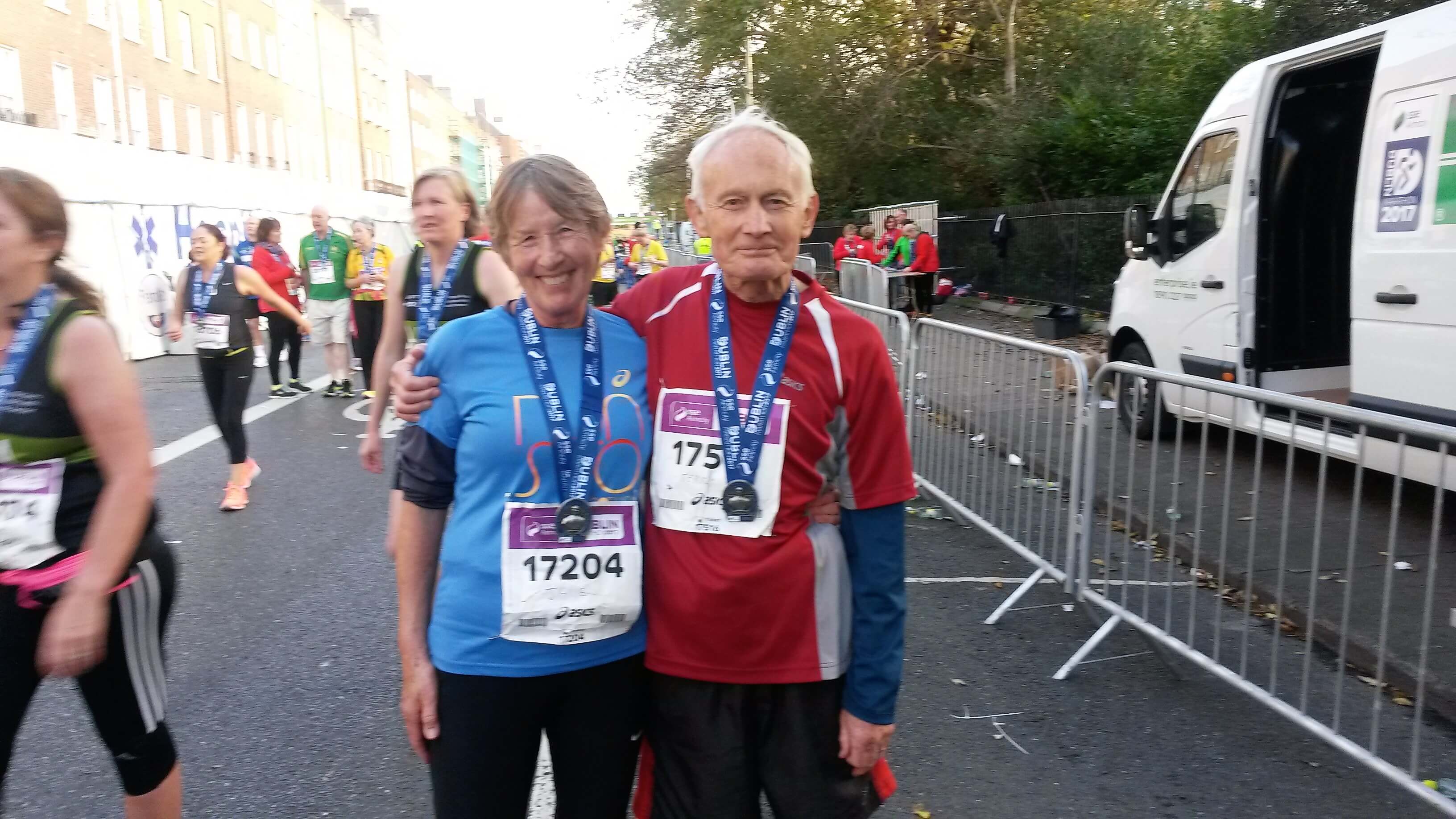Running Marathons in your Seventies – it’s never too late
By Malcolm | 18th February 2018 |
I was never a sporty child or adult despite being a physiotherapist. I played bad tennis and badminton and looked after the family while my husband ran and played rugby. I started running gently myself to get fit for a long distance walk when I was 45. When I was 55 I ran the London Marathon and presumed that was my Everest and stopped. I was wrong. I am now 74 and over the last 6 years, after my husband retired late from playing rugby, we have run 12 marathons all over the world. This year we complete the 6 Majors by running Boston. Our friends and family think we are crazy but we have much fun on our long weekends out of country taking in museums, operas, concerts and then on a Sunday a whole city closes down for us to see the sights as we run.

Dublin 2017
We clock up reasonable times between 5.30 and 5.45 and sometimes I am ahead and sometimes my husband. I even won a prize at the Rome marathon for being the first woman over 70 over the line.
How do we do it?
We have always kept fit and slim by walking and not eating too much. As one grows older we all lose muscle fibre, flexibility, balance and our joints may start to wear out. It is possible to slow this process by performing specific muscle strengthening exercises at home or in the gym and by walking rather than driving and using stairs rather than a lift. Flexibility, balance and core strength can be aided by Pilates type exercises. Those youngsters in the gym may be building big muscles but you are just trying not to lose yours. If you do not like the gym, stretchy bands and weights can be used at home. I advocate using the urban gym which is free. Always walk fast, walk up and down escalators, use the benches and rails in your local park for press ups and stand ups. Always walk short distances rather than wait for a bus if you have time. Dancing, cycling, tennis, badminton, bowls, golf etc can all be carried on for as long as we like.
Starting
Check with your doctor before you start. Begin with short distances. Walk with your new running shoes, suitable clothing, no bags and with your head held high. Think of your posture, head up, shoulders back and down, tummy in and off you go. Next walk for 10 steps then jog for ten steps for about 15 mins. As this becomes easier increase the number of jogs and the length of time. If you do not like going out on your own find a local running club and you will soon be ready to try the excellent Park Runs.

Tokyo 2017
How to prevent injuries
It is important not to over-do it as we get older. Once you are up and running consider going faster and spending less time on your feet to keep off the joints. I only run 3 times a week. Do not stint on good shoes and always listen to your body when you have an injury. Small sprains and strains will usually respond to rest. Simple measures such as ice, bandage, pain killers and elevation can be done at home. More serious injuries of course should be taken to your doctor. The older we are, the more prone we are to tripping on uneven pavements and tree roots. Avoidance of running in the dark is a good idea. Never stretch cold muscles as you might see people do. The end of the run is the time to stretch then have a cool bath or shower.
Marathon preparation
We start to increase our running 14 weeks before a marathon. We will follow a programme and slowly increase our running distance each week until we have done 20 miles then taper off for a couple of weeks before the race.
We think it quite normal to mix with 30,000 runners and we get plenty of cheers along the way. Get out there, enjoy yourselves; old age is much more enjoyable when you are fit.
Jane Gibson
Find a running injury specialist to help stay injury free at sportsinjuryfix.com
